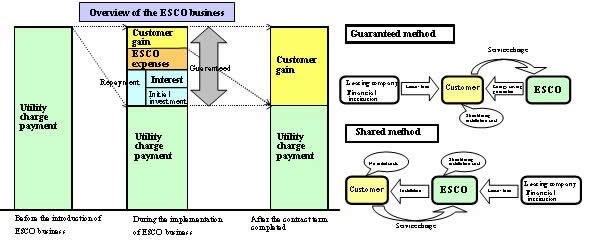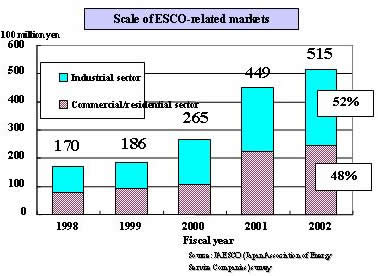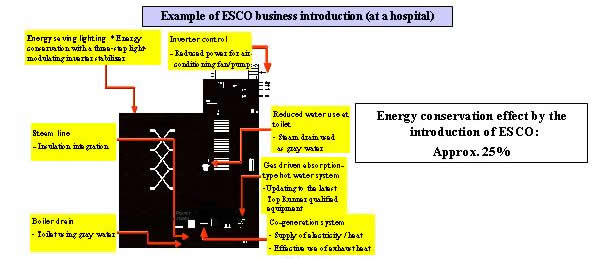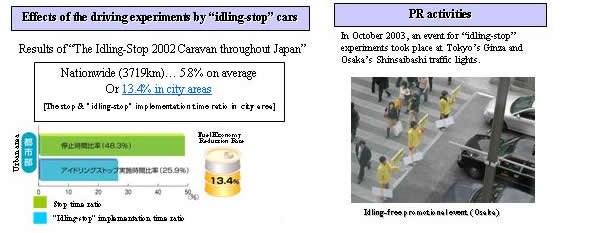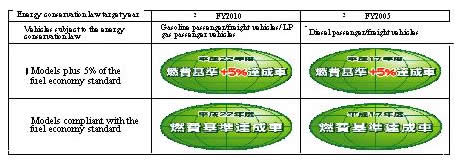II-2. Energy Conservation Measures for the Commercial/Residential Sector
Promotion of ESCO Business What Is the ESCO Business?
Promotion of ESCO Business What Is the ESCO Business?
- A business that offers comprehensive services on energy conservation to clients, who in return will offer a part of their energy saving gains (saving on utility bill, etc.)
- The business has two forms: "Guaranteed savings agreement" where customers cover business costs and "Shared savings agreement" where the ESCO business covers business costs. These options enable service provision according to customer needs.
- ESCO stands for Energy Service Company.
